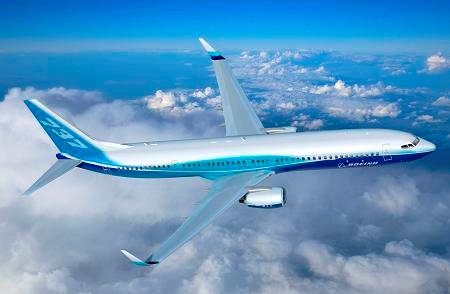Boeing has restated its aim of announcing its plans for the 737 - whether to re-engine or to go for a completely new, clean-sheet design - by the middle of the year.
However, according to John Tracy, Boeing's chief technology officer, the decision will be guided by the availability of engineering resources, given the potential demands from a 777 update and the development of derivatives of the 787.
Whether a new single-aisle family will find more demand than an updated version of the 777 is the "big question" being discussed at the company, says Tracy.
The 777 will face a certain amount of competition once the A350-1000 enters service. Boeing is considering replacing the 777's aluminium wing with a composite structure as one option to update it, but has also contemplated a completely new design.
Meanwhile, in the narrowbody segment, pressure is mounting on Boeing to respond to the challenge posed by the Airbus A320neo, which has gathered more than 330 orders since its launch in December.
Summing up the challenge, Tracy says: "We are pretty much committed not to have two major development programmes going on simultaneously, [and] to get the right people on the right job at the right time."
The future single-aisle strategy will therefore be determined by the "firing order" of different new models. These include further development of the 777 and 787 derivatives, such as the stretched 787-9 that is due to enter service in 2013.
Tracy adds that the 777's future will be revealed "soon after" determining the strategy for the 737, indicating a decision on the large twinjet in the second half of this year.
 |
|---|
© Boeing |
Unlike Airbus, which maintains that "game-changing" technology for a next-generation narrowbody aircraft will not be available until around 2025-30 - particularly with regard to the propulsion system - Boeing takes a more sanguine view of the pace of technological advancement.
Tracy believes that the development of new technology would not be the main hurdle for a clean-sheet aircraft programme, he says. Unsurprisingly, Tracy dismisses Airbus's view on the apparent lack of maturity of advanced engineering. "I am a technologist, so I am never going to say that technology is going to limit us," he says.
It is not clear whether a brand-new single-aisle aircraft would follow the 787's lead and have one or both of the fuselage and wing made from composite, or whether it would stick with an all-metal construction. Tracy confirms that Boeing is looking at advanced metals, such as aluminium-lithium alloy, and composites.
Aside from achieving traditional aerospace objectives, such as lower weight, greater strength, better fatigue life characteristics - and in the case of engine components, higher temperature resistance - the construction material for a new aircraft must ensure ease and speed of manufacturing.
This is crucial for the high-rate production of single-aisle aircraft. Boeing plans to increase its monthly 737 output from the current level of 31.5 to 38 aircraft by the second quarter of 2013 and will consider taking this beyond 40 in future (just shy of the Airbus's planned rate of 44 on its A320 line).
The monthly 787 production rate, on the other hand, is to rise from the present two aircraft to two-and-a-half by mid-2010, reaching 10 aircraft in 2013.
Tracy signals that the time required for composite construction, as employed on the 787, would pose a challenge for a narrowbody jet, suggesting that a metal-based design is more likely.
"The composite manufacturing process today requires one to lay down material with some sort of machine and then put it into an autoclave to cure it. That takes a lot of time Can you get enough of those [production] machines in the right place at the right time or is some other approach that we need for a more rapid manufacture? Is the advantage we get with composites outweighed by the additional time to manufacture them?"
He adds that Boeing is investigating alternative technologies "to see if we can eliminate some of those manufacturing constraints".
Another challenge in developing a next-generation narrowbody will be to determine its optimum size. As with the 737 and A320 families, a new design will lead to a baseline model that can be stretched or shrunk for different capacity and performance demands.
However, especially with the smallest 737-600 and A318 models failing to generate significant sales, and Bombardier's Cseries entering the market at the lower capacity end, there have been questions whether the 737/A320 families straddle too wide a range. Critics suggest that a better course of action would be to develop two separate aircraft.
Tracy disagrees with that analysis, but believes that a slightly larger aircraft will be the preferred option. "I think it will be a similar pattern with a base model that covers a [capacity] range," he says. "There is a good chance that range will be shifted up a little bit."
Source: Flight International



















